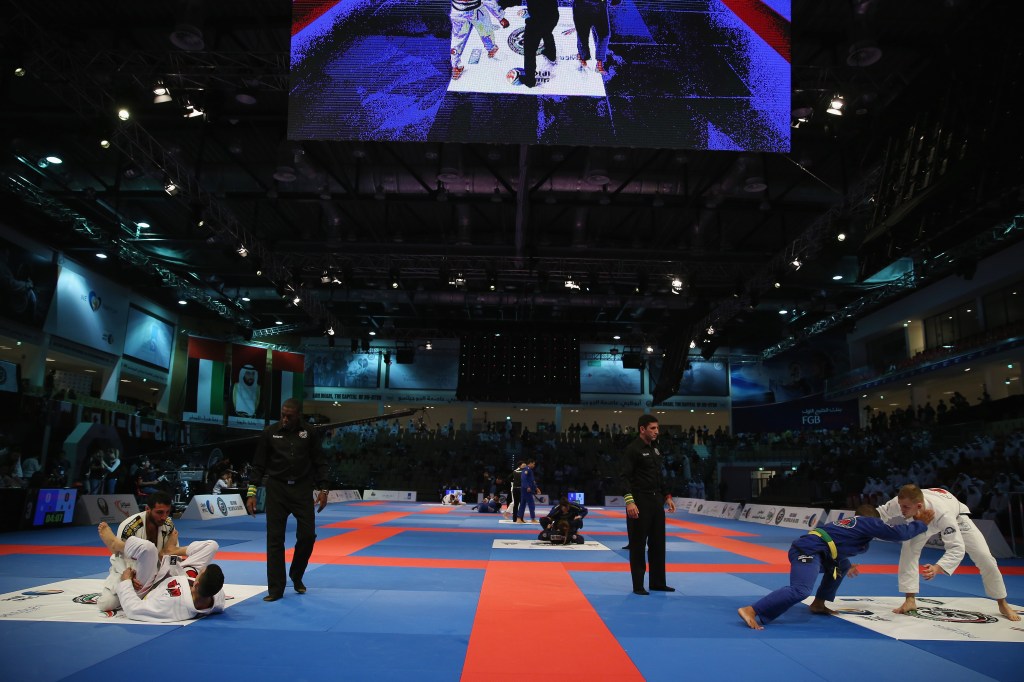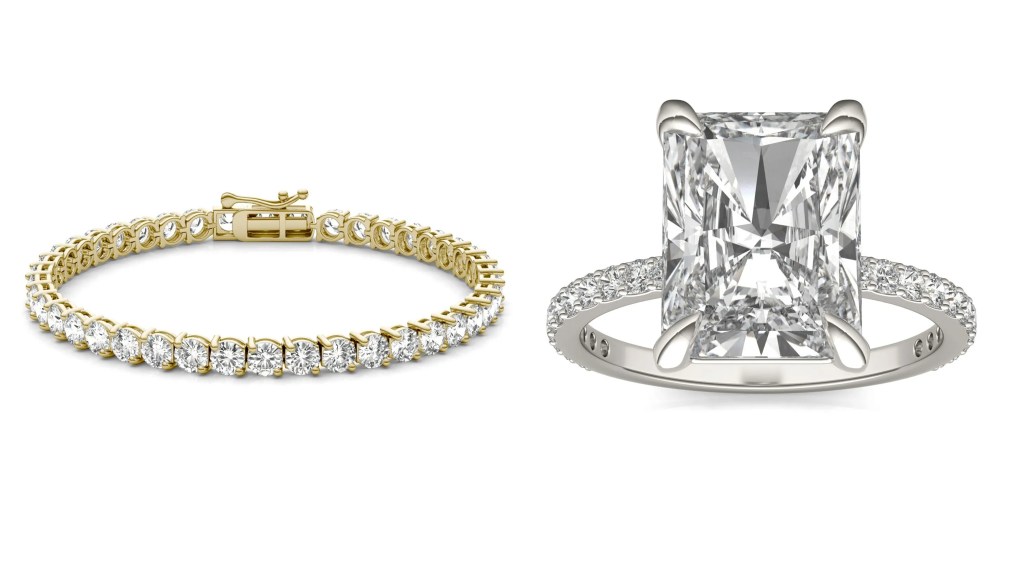While Elon Musk’s and Mark Zuckerberg’s social media sparring about a potential UFC cage match (depending on Musk’s back, that is) has made many Google “jujitsu,” the groundings of the self-defense martial art date back centuries.
The exact origins and native land of the combat sport are widely debated and even the name varies — with jiu-jitsu, jujutsu and jujitsu all being used. Depending whom you ask, some trace the heritage based on records, illustrations and manuscripts to Japan, China, Persia, Germany and Egypt. For example, a Babylonian copper stand from the third millennium B.C. depicts two men using a standard jujitsu position — a grappling technique meant to throw an opponent off balance by controlling a hip. Ground fighting and submission holds are also used to outsmart opponents.
Although judo and taekwondo have achieved Olympic sport status, jujitsu has not. Many fans keep up with elites via the UFC and lesser-known practitioners via local matches in their communities. In addition, celebrities like Ashton Kutcher, Ed O’Neill, Keanu Reeves, Kelly Slater, Tom Hardy, Jason Statham, Kate Upton, Russell Brand, Guy Ritchie and Demi Lovato who train in jujitsu have also fueled interest in what is considered the gentlest of the martial arts — the Japanese translation of “jiu” means gentle and “jitsu” means art.
Jujitsu started to take hold in Europe and North and South America near the end of the 19th century thanks to an influx of practitioners from Japan, who migrated to Europe and the Americas. There they sparred with boxers and wrestlers in public challenges and matches. There was also demand to teach the Japanese art of self-defense to military units, law enforcement officials and everyday people. By the fall of 1930, the now-famed Gracie brothers had opened a jujitsu academy in Brazil that also encompassed nutrition and spirituality. Over time Carlos and Hélio Gracie helped groom future generations as jujitsu grand masters. Hélio Gracie’s son, Rorion, gave Brazilian jujitsu a major jolt into the mainstream by helping to start the Ultimate Fighting Championship in 1993. That also sparked the creation of academies and gyms to teach Brazilian jujitsu — and there are now upward of 10,000 BJJ gyms in the U.S. Intricate and transitional movements are integral to the practice.
This summer Musk, who has trained with Lex Fridman to improve his fighting skills, became a certified Brazilian jujitsu black belt. After medaling twice in his first jujitsu tournament, the blue-belted Zuckerberg posted about his plans for a backyard Octagon.
The tech titans aren’t the only jujitsu practitioners grabbing headlines. Gisele Bündchen’s jujitsu instructor and sometimes companion Joaquim Valente has also been in the news. In 2007, Valente received the Professors’ Diploma from Grandmaster Hélio Gracie, making him one of 27 people to have done so in the past 75 years. He and his two brothers are the third generation in their family to train others at their academy, Valente Brothers in Miami. They have taught jujitsu to several law enforcement officers from such agencies as the Federal Bureau of Investigation, U.S. Secret Service and U.S. Customs. The brothers build upon their father Grand Master Pedro Valente’s ethos that their jujitsu “is a way of life — it is a self-confidence, health and balance.”
The multidimensional aspects of BJJ is what reels in many. John Clarke, owner of Broadway Jiu-Jitsu in Boston, says, “At its core, jujitsu is the art of controlling and subduing an opponent whether in a real-world situation or in a sports context through the use of joint manipulations, chokeholds and leverage. There is a correlation between the rise in popularity in jujitsu and the rise in popularity of MMA, which is driven mostly by the popularity of the UFC.”
The practice’s appeal is less about its origins and more about what the art does for practitioners now, says Clarke. “A lot of people feel good physically when they do it. And then they feel great mentally when they get to tell others that they do it. Half of jujitsu is doing it and feeling good and the other half is bragging about it and feeling good.”
So much so that telling people that you do jujitsu outweighs “actually doing it and dedicating yourself to it,” Clarke contends. “Over the past five years, jujitsu has transitioned from an art that was pursued to a product that people now consume,” suggesting that the more vocal enthusiasts are not the most dedicated.
While Musk’s and Zuckerberg’s association with jujitsu is factoring into the current interest to a degree, Clarke says the interest had already been high, driven largely by “the mano-sphere or bro-sphere of podcasters” like the controversial Joe Rogan, neuroscientist Andrew Huberman, the aforementioned Fridman (a MIT research scientist) and the former U.S. Navy SEAL commander Jocko Willink, Clarke says.
“It’s great that Mark Zuckerberg has all of this money and time to seek out great training. But when people consume this via social media, they think if Zuckerberg can do it, I can do it. He’s not a large guy. He doesn’t have an athletic pedigree. They forget that he has all the free time in the world and all the money in the world. People will try to emulate what he’s doing. Without those same resources, they may be disappointed or discouraged. It’s great those guys are doing it. But consumers of jujitsu and new entrants need to be careful about measuring their expectations against celebrities doing it,” Clarke cautions.
Another potential reason for an upswing in interest, as detailed in fitness industry reports, is that Millennials are more inclined to take group fitness classes in cultural environments versus working out in the big-box type gyms that were the norm in the past. But unlike with some of those boutique fitness classes or sports in general, the physical benefits of jujitsu aren’t always immediately noticeable, nor is that the end game.
Clarke explains, “It certainly becomes a lifelong pursuit. This is not a situation where you’re going to get instant results. The reason that brings you in the door is not necessarily the reason that keeps you in the door. I make sure that people really understand that they’re going to have to enjoy the journey. There is a long runway to results.”
Unlike with boxing fitness classes that produce a sense of work and accomplishment from day one, jujitsu requires first educating your body in the movements that are integral to the art. That skill-building process is needed before the sport can be used as a fitness modality, Clarke says. But the mental side is what wins over devotees.
“There are physical, mental and social aspects to it. Some approach jujitsu as a series of fluid problems to solve, which appeals to analytical minds and explains the tons of computer science specialists and engineers that are into it. Former athletes are drawn to its ability to allow them to continue to compete on some level. Others are purely drawn to the social aspects that come with continuing along on this long arc,” Clarke says. “I have a handful of friends that I have had my whole life that I can assure you I never would have associated with before jujitsu.”
Clarke adds, “From the mental side, you’ve got to be prepared that each day that you go to the gym, you’re going to have to struggle and deal with the fact that at some point, you probably have won or lost some level of training that day.”

Grappling — the umbrella term for the martial arts that grab, throw and choke, as opposed to those that punch and kick — is not something that’s often seen in action movies. “However, many children are naturally drawn to grappling, as evident in how they are inclined to wrestle and tug on each other. But proper training is necessary for grappling, since it requires some basic movements that most people have probably not ever done in their lives,” Clarke says.
Inversion techniques like turning upside down with a good deal of weight on your shoulders as you roll underneath an opponent and put that opponent’s weight on top of you is also among the skills. It can also be difficult for anyone 25 or older to learn techniques that start from the feet to the ground. Putting your weight on someone in order to force them to carry it requires a certain comfort level with one’s body.
“There’s a lot of intimate contact with jujitsu. Some individuals — whether they have body issues, want to be nice to their partners or whatever — are totally uncomfortable plopping all of their weight down on somebody. Me? I love it. I want to smash everybody with my weight because it means I have to do less work. Gravity will never wane. Strength will wane,” Clarke says.



